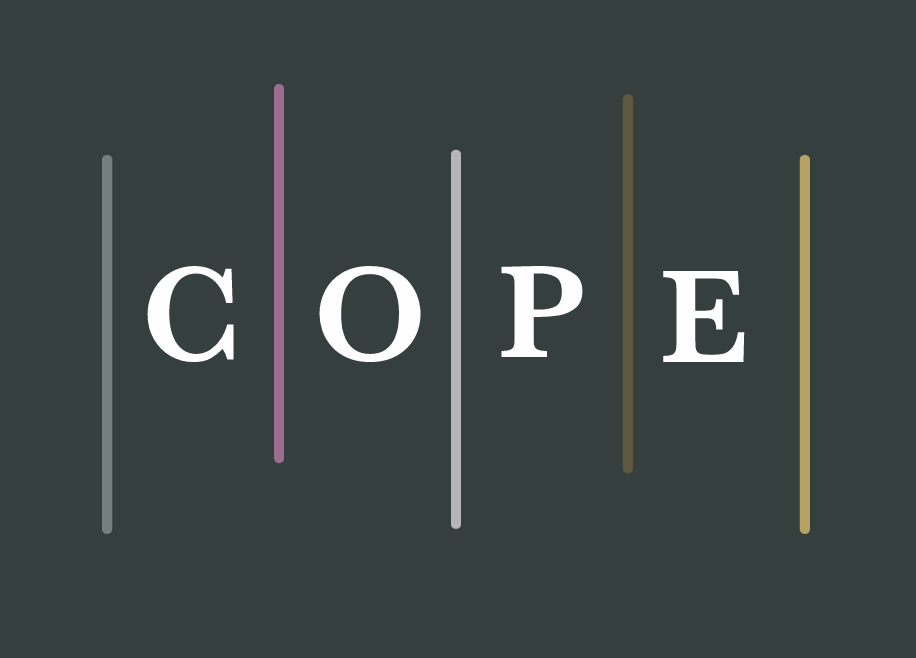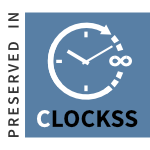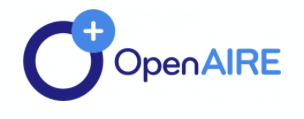Announcements
Please note: To accommodate reviewer and recommender holiday schedules, we will be closed to submissions from 1st July — 1st September. During this time, reviewers will be able to submit reviews and recommenders will issue decisions, but no new or revised submissions can be made by authors. The one exception to this rule is that authors using the scheduled track who submit their initial Stage 1 snapshot prior to 1st July can choose a date within the shutdown period to submit their full Stage 1 manuscript.
We are recruiting recommenders (editors) from all research fields!
Your feedback matters! If you have authored or reviewed a Registered Report at Peer Community in Registered Reports, then please take 5 minutes to leave anonymous feedback about your experience, and view community ratings.
201 records found
Latest recommendations

| Id | Title * | Authors * | Abstract * | Picture | Thematic fields * ▲ | Recommender | Reviewers | Submission date | |
|---|---|---|---|---|---|---|---|---|---|
16 Aug 2023
STAGE 1

Identifying relevant experiences to the measurement of social media experience via focus groups with young people: A registered reportJo Hickman Dunne, Louise Black, Emily Banwell, Pratyasha Nanda, Molly Anderton, Lily Corke Butters, Ola Demkowicz, Brittany Davidson, Pamela Qualter, Neil Humphrey, Caroline Jay, and Margarita Panayiotou https://psyarxiv.com/erjvz/A mental health perspective to adolescents’ social media experiencesRecommended by Veli-Matti Karhulahti based on reviews by Amy Orben, Jana Papcunova, Lisa Orchard, Elena Gordon-Petrovskaya and Gaurav Saxena based on reviews by Amy Orben, Jana Papcunova, Lisa Orchard, Elena Gordon-Petrovskaya and Gaurav Saxena
Measuring people’s experiences, thoughts, and mental processes has always been a core challenge of psychological science (e.g. Nisbett & Wilson 1977). When such measurement further relates to rapidly changing and conceptually diverse human-technology interactions, the task becomes even more difficult due to protean, multidimensional constructs. A good understanding of a construct is a basic step in its measurement (Borsboom 2005).
In the present registered report, Hickman Dunne et al. (2023) carry out a focus group study with adolescents (n=32) aged 11 to 15 in Northwest England to improve the understanding of constructs related to social media and mental health experiences. The work is carried out as part of a long-term measure development project. The authors apply reflexive thematic analysis to explore adolescents’ social media use experiences and related motivations in the light of mental health, in addition to which the adolescents’ own views of benefits and risks are mapped out. A particular strength of the design is the engagement of three Young Researchers who will co-facilitate the focus groups and be involved in the analysis. The research plan also meets high reflexivity and transparency criteria, and as such, can significantly contribute to future scale development as well as our general understanding of adolescents’ social media experiences. The Stage 1 manuscript was reviewed over two rounds by five unique reviewers, one of which participated in both rounds. The reviewers’ expertise ranged from social media and technology use research to health psychology and qualitative methods. Based on careful revisions and detailed responses to the reviewers’ comments, the recommender judged that the manuscript met the Stage 1 criteria and therefore awarded in-principle acceptance. URL to the preregistered Stage 1 protocol: https://osf.io/w24ec
Level of bias control achieved: Level 2. At least some data/evidence that will be used to answer the research question has been accessed and partially observed by the authors, but the authors certify that they have not yet observed the key variables within the data that will be used to answer the research question. List of eligible PCI RR-friendly journals: References
1. Borsboom, D. (2005). Measuring the mind: Conceptual issues in contemporary psychometrics. Cambridge University Press. 3. Nisbett, R. E., & Wilson, T. D. (1977). Telling more than we can know: Verbal reports on mental processes. Psychological review, 84, 231–259. https://doi.org/10.1037/0033-295X.84.3.231
2. Hickman Dunne J., Black L., Banwell E., Nanda P., Anderton M, Butters L.C., Demkowicz O., Davidson B., Qualter P., Humphrey N., Jay C., and Panayiotou M. (2023). Identifying relevant dimensions to the measurement of adolescent social media experience via focus groups with young people: A registered report. In principle acceptance of Version 5 by Peer Community in Registered Reports. https://osf.io/w24ec | Identifying relevant experiences to the measurement of social media experience via focus groups with young people: A registered report | Jo Hickman Dunne, Louise Black, Emily Banwell, Pratyasha Nanda, Molly Anderton, Lily Corke Butters, Ola Demkowicz, Brittany Davidson, Pamela Qualter, Neil Humphrey, Caroline Jay, and Margarita Panayiotou | <p>Background: While work on the relationship between social media use and adolescent mental health has allowed for some progress, research in this area is still relatively new and shows mixed evidence. This is partly the consequence of a rapidly ... | Computer science, Social sciences | Veli-Matti Karhulahti | 2023-06-14 21:10:43 | View | ||
05 Jun 2024
STAGE 1
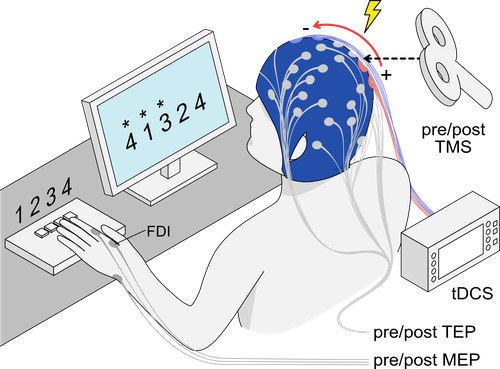
Dose-response of tDCS effects on motor learning and cortical excitability: a preregistered studyGavin Hsu, Dylan J. Edwards, Leonardo G. Cohen, Lucas C. Parra https://osf.io/k6abpHow stimulation intensity affects motor learningRecommended by Christina Artemenko based on reviews by Charlotte Wiltshire and 1 anonymous reviewer based on reviews by Charlotte Wiltshire and 1 anonymous reviewer
In neurostimulation research, the parameters of a stimulation protocol crucially impact on the effects of the stimulation. Transcranial direct current stimulation (tDCS) is a neurostimulation technique that typically uses current intensities about 1-2 mA in human research to modulate motor and cognitive behavior. The current sham-controlled study by Hsu et al. (2024) applies current intensities not only of 2 mA but also of 4 mA and 6 mA and thus extends our understanding of stimulation parameters while ethical standards are preserved.
The influence of tDCS over the primary motor cortex will be evaluated for neural plasticity during motor learning. Stimulation effects will be tested not only behaviorally but also physiologically by motor evoked potentials elicited by transcranial magnetic stimulation (TMS). The presented pilot data are promising and underline the feasibility of the proposed research design. The study will contribute to tDCS research by uncovering reasons for controversial findings and thus increase reproducibility.
The Stage 1 manuscript was evaluated over two rounds of in-depth review. Based on detailed responses to the reviewers' comments, the recommender judged that the manuscript met the Stage 1 criteria and therefore awarded in-principle acceptance (IPA).
URL to the preregistered Stage 1 protocol: https://osf.io/jyuev
Level of bias control achieved: Level 2. At least some data/evidence that will be used to answer the research question has been accessed and partially observed by the authors, but the authors certify that they have not yet observed the key variables within the data that will be used to answer the research question. List of eligible PCI RR-friendly journals: References
Hsu, G., Edwards, D. J., Cohen, L. G., & Parra, L. C. (2024). Dose-response of tDCS effects on motor learning and cortical excitability: a preregistered study. In principle acceptance of Version 1.3 by Peer Community in Registered Reports. https://osf.io/jyuev
| Dose-response of tDCS effects on motor learning and cortical excitability: a preregistered study | Gavin Hsu, Dylan J. Edwards, Leonardo G. Cohen, Lucas C. Parra | <p>Neuromodulatory effects of transcranial direct current stimulation (tDCS) on the primary motor cortex (M1) have been reported in terms of changes in corticospinal excitability using motor evoked potentials (MEPs), as well as behavioral effects ... |  | Engineering, Life Sciences | Christina Artemenko | 2024-01-11 00:11:23 | View | |
26 Apr 2022
STAGE 1

Do task-irrelevant cross-modal statistical regularities induce distractor suppression in visual search?Kishore Kumar Jagini and Meera Mary Sunny https://osf.io/2v3nb/?view_only=c1bf36677deb46cba762f37d7735c09cLearning cross-modally to suppress distractorsRecommended by Zoltan Dienes based on reviews by Miguel Vadillo and 1 anonymous reviewer based on reviews by Miguel Vadillo and 1 anonymous reviewer
There are two fundamental processes that the brain engages in: statistical learning and selection. Indeed, past work has shown these processes often come together: People can use a task-irrelevant stimulus to predict a target stimulus even in different modalities (crossmodal statistical learning), thereby enhancing the processing of the target stimulus (selection). Further, people can learn where a distractor will be in order to efficiently suppress it (selecting out), using task irrelevant stimuli in the same modality (within-modality statistical learning).
In the current study, Jagini and Sunny will test whether people can learn where a distractor stimulus is, in order to suppress it (selecting out), using a task-irrelevant stimulus from a different modality (cross modal statistical learning). They will also test whether people can express awareness of the relation between the predictor task-irrelevant stimulus and the location of the distractor on a forced choice test. On some (but not other) theories of consciousness, such a test measures conscious knowledge of the association.
The Stage 1 manuscript was evaluated over two rounds of in-depth review. Based on detailed responses to the reviewers' comments, the recommender judged that the manuscript met the Stage 1 criteria and therefore awarded in-principle acceptance (IPA).
URL to the preregistered Stage 1 protocol: https://osf.io/qjbmg
Level of bias control achieved: Level 6. No part of the data or evidence that will be used to answer the research question yet exists and no part will be generated until after IPA.
List of eligible PCI RR-friendly journals:
References
1. Jagini, K. K. & Sunny, M. M. (2022). Do task-irrelevant cross-modal statistical regularities induce distractor suppression in visual search? Stage 1 Registered Report, in principle acceptance of Version 4 by Peer Community in Registered Reports. https://osf.io/qjbmg
| Do task-irrelevant cross-modal statistical regularities induce distractor suppression in visual search? | Kishore Kumar Jagini and Meera Mary Sunny | <p>We are constantly bombarded with a vast number of multisensory stimuli in our daily lives. Our sensory systems are known to extract and utilize statistical regularities in the sensory inputs across space and time to optimize the attentional ori... | Humanities, Life Sciences, Social sciences | Zoltan Dienes | 2021-12-21 15:23:20 | View | ||
01 Dec 2022
STAGE 1

Cerebral lateralization of writing in students at risk for dyslexia using functional Transcranial Doppler ultrasonographyAnastasia-Konstantina Papadopoulou, Filippos Vlachos, Panagiota Pervanidou, Sofia Anesiadou, Faye Antoniou, Phivos Phylactou, Nicholas A. Badcock, Marietta Papadatou-Pastou https://osf.io/u54tkLateralisation for written language in primary school students at risk for dyslexiaRecommended by Saloni Krishnan based on reviews by Margriet Groen and Todd Richards based on reviews by Margriet Groen and Todd Richards
While cerebral lateralisation for oral language is well-characterised, cerebral lateralisation for written language is much less well-understood. In this study, Papadopoulou et al. (2022) will use functional transcranial Doppler ultrasonography to assess lateralisation for written language in 7- to 9-year-old children at risk for dyslexia and neurotypical children. They will use tasks that assess efficiency in reading and writing names as well as speed and fluency in writing. The findings of this manuscript will highlight whether children with dyslexia showed atypical lateralisation for language in a written task. In addition, the authors plan to explore the correlation between lateralisation and writing competence.
The Stage 1 manuscript was evaluated over two rounds of in-depth review. Based on the edits made to the manuscript, and detailed responses to the reviewers' comments, the recommender judged that the manuscript met the Stage 1 criteria and therefore awarded in-principle acceptance (IPA).
URL to the preregistered Stage 1 protocol: https://osf.io/u54tk (under temporary private embargo)
Level of bias control achieved: Level 6. No part of the data or evidence that will be used to answer the research question yet exists and no part will be generated until after IPA. List of eligible PCI RR-friendly journals:
References
1. Papadopoulou, A.-K., Vlachos, F., Pervanidou, P., Anesiadou, S., Antoniou, F., Phylactou, P., Badcock, N.A. & Papadatou-Pastou, M. (2022). Cerebral lateralization of writing in students at risk for dyslexia using functional Transcranial Doppler ultrasonography, in principle acceptance of Version 2 by Peer Community in Registered Reports. https://osf.io/u54tk (under temporary private embargo)
| Cerebral lateralization of writing in students at risk for dyslexia using functional Transcranial Doppler ultrasonography | Anastasia-Konstantina Papadopoulou, Filippos Vlachos, Panagiota Pervanidou, Sofia Anesiadou, Faye Antoniou, Phivos Phylactou, Nicholas A. Badcock, Marietta Papadatou-Pastou | <p>It is well established that the left hemisphere is dominant in oral language in the majority of neurotypical individuals, while a more symmetrical pattern of activation in shown in cases of language disorders, such as dyslexia. Cerebral lateral... | Humanities, Life Sciences, Social sciences | Saloni Krishnan | Margriet Groen, Todd Richards | 2022-06-06 09:00:26 | View | |
No reliable effect of task-irrelevant cross-modal statistical regularities on distractor suppressionKishore Kumar Jagini, Meera Mary Sunny https://doi.org/10.31234/osf.io/d8wesFailure to learn cross-modally to suppress distractorsRecommended by Zoltan Dienes based on reviews by Miguel Vadillo and 1 anonymous reviewer based on reviews by Miguel Vadillo and 1 anonymous reviewer
There are two fundamental processes that the brain engages in: statistical learning and selection. Indeed, past work has shown these processes often come together: People can use a task-irrelevant stimulus to predict a target stimulus even in different modalities (crossmodal statistical learning), thereby enhancing the processing of the target stimulus (selection). Further, people can learn where a distractor will be in order to efficiently suppress it (selecting out), using task irrelevant stimuli in the same modality (within-modality statistical learning).
In two experiments Jagini and Sunny found that people did not learn to use a task-irrelevant stimulus from a different modality (cross modal statistical learning) to suppress a distractor (selecting out). They also found that people had little awareness of the relation between the predictor task-irrelevant stimulus and the location of the distractor. The results may reflect limits on what can be achieved unconsciously. Following peer review, the recommender judged that the manuscript met the Stage 2 criteria and awarded a positive recommendation.
URL to the preregistered Stage 1 protocol: https://osf.io/qjbmg
Level of bias control achieved: Level 6. No part of the data or evidence that was used to answer the research question existed prior to Stage 1 in-principle acceptance. List of eligible PCI RR-friendly journals:
References
1. Jagini, K. K. & Sunny, M. M. (2023). No reliable effect of task-irrelevant cross-modal statistical regularities on distractor suppression. Stage 2 Registered Report, acceptance of Version 4 by Peer Community in Registered Reports. https://doi.org/10.31234/osf.io/d8wes
| No reliable effect of task-irrelevant cross-modal statistical regularities on distractor suppression | Kishore Kumar Jagini, Meera Mary Sunny | <p>Our sensory systems are known to extract and utilize statistical regularities in sensory inputs across space and time for efficient perceptual processing. Past research has shown that participants can utilize statistical regularities of target ... | Humanities, Life Sciences, Social sciences | Zoltan Dienes | 2022-11-21 15:30:30 | View | ||
Progression of white matter hyperintensities is related to blood pressure increases and global cognitive decline – a registered reportFrauke Beyer, Laurenz Lammer, Markus Loeffler, Steffi Riedel-Heller, Stéphanie Debette, Arno Villringer, A. Veronica Witte https://osf.io/k24pmWhite matter lessions are associated with increases in blood pressure and global cognitive declineRecommended by Chris Chambers based on reviews by Isabel Garcia Garcia based on reviews by Isabel Garcia Garcia
Cerebral small vessel disease (CSVD) is a common and multi-faceted set of pathologies that affect the small arteries, arterioles, venules and capillaries of the brain. The disease manifests through a range of symptoms and conditions, including psychiatric disorders, abnormal gait, and urinary incontinence, while accounting for 25% of strokes and nearly 50% of dementia.
The presence of CSVD is associated with white matter lesions detected as white matter hyperintensities (WMH) using neuroimaging, which have in turn been shown to predict future stroke, cognitive decline and dementia. While vascular risk factors of CSVD (such as hypertension and obesity) are also associated with CSVD, a complete picture of the predictive relationship between WMH, cognitive decline, and blood pressure remains to be determined, as does the role of sex/gender. These inter-relationships are important to determine for improving the diagnosis and treatment of CSVD.
In the current study, Beyer et al. analysed a large emerging dataset from the LIFE-Adult project – a longitudinal, two-wave, population-based study – to ask whether higher blood pressure predicts a greater increase in WMH, and whether progression of WMH is associated with measures of memory and executive function. In addition, the authors explored the relationship between abdominal obesity and WMH progression, and the extent to which WMH progression, and its interaction with vascular risk factors, depends on sex/gender.
Results revealed no reliable association between baseline blood pressure with WMH progression. WMH progression significantly predicted global cognitive decline but not decline in executive function specifically. Exploratory analyses revealed that increases in diastolic blood pressure as well as baseline and systolic blood pressure were associated with WMH progression, specifically in frontal periventricular regions, but there was no association of waist-to-hip ratio (a proxy of abdominal fat deposits) with WMH progression nor any gender-specific associations. The authors conclude that strict control of blood pressure might confer a protective effect, limiting WMH progression and negative effects on global cognitive function in the middle-aged to older population.
The Stage 2 manuscript was evaluated over one round of in-depth review. Based on responses to the reviewer's comments, the recommender judged that the manuscript met the Stage 2 criteria and awarded a positive recommendation.
URL to the preregistered Stage 1 protocol: https://osf.io/qkbgj Level of bias control achieved: Level 2. At least some data/evidence that was used to answer the research question had been accessed and partially observed by the authors prior to Stage 1 in-principle acceptance, but the authors certify that they had not yet observed the key variables within the data that were used to answer the research question.
List of eligible PCI RR-friendly journals: References
1. Beyer, F., Lammer, L., Loeffler, M., Riedel-Heller, S., Debette, S., Villringer, A. & Witte, A. V. (2023). Progression of white matter hyperintensities is related to blood pressure increases and global cognitive decline – a registered report [Stage 2]. Acceptance of Version 2 by Peer Community in Registered Reports. https://osf.io/k24pm
| Progression of white matter hyperintensities is related to blood pressure increases and global cognitive decline – a registered report | Frauke Beyer, Laurenz Lammer, Markus Loeffler, Steffi Riedel-Heller, Stéphanie Debette, Arno Villringer, A. Veronica Witte | <p>Introduction<br>White matter hyperintensities (WMH) reflect cerebral small vessel disease (cSVD), a major brain pathology contributing to cognitive decline and dementia. Vascular risk factors including higher diastolic blood pressure (DBP) have... | 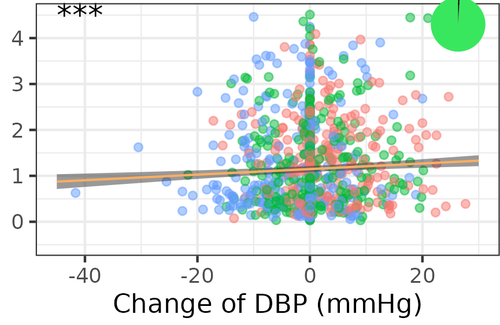 | Humanities, Medical Sciences | Chris Chambers | 2024-02-15 17:16:37 | View | |
15 Apr 2023
STAGE 1

Reconstructing Gaming Disorder: A Taxonomy by Registered ReportVeli-Matti Karhulahti, Marcel Martončik, Miia Siutila, Solip Park, Yaewon Jin, Matúš Adamkovič, Tiina Auranen, Bora Na, Tae-Jin Yoon https://osf.io/xtbgyHow can the experiences of those who engage in video games in healthy and unhealthy ways be systematically organised?Recommended by Zoltan Dienes based on reviews by Michelle Carras, Lukas J. Gunschera and Christopher Ferguson based on reviews by Michelle Carras, Lukas J. Gunschera and Christopher Ferguson
People are often drawn into intensive video game use in ways they or others may find troubling, harmless or even praiseworthy. Understanding these different experiences may help with integrating intensive technology use into everyday life in a healthy way.
In this programmatic submission, Karhulahti et al. (2023) will explore the gaming experiences of three groups of people (those who have sought treatment for gaming, esport players, and adolescents who play around two hours every day), using phenomenological and clinical interviews, and gaming diary logs every four months over three years. Around 200-300 participants will be recruited initially from Finland, Slovakia, and South Korea. In order to further increase cross-cultural range, the study will apply a new duplication method to collect similar data also in countries that have been studied little in the past. The aim will be to answer the questions of a) Is it possible to distinguish passionate from pathological gaming by the meanings and values that players attach to videogame play? and b) What are the design structures of videogames, which are played intensively and/or with gaming-related health problems? Ultimately, the study aims to synthesise all its data into a new taxonomic system, which can help better understand the differences and idiosyncrasies of gaming in lives across cultures.
This Stage 1 manuscript was evaluated over two rounds of in-depth review. Based on the comprehensive responses to the reviewers' feedback, the recommender judged that the manuscript met the Stage 1 criteria and therefore awarded in-principle acceptance (IPA).
URL to the preregistered Stage 1 protocol: https://osf.io/ekm8x Level of bias control achieved: Level 4. At least some of the data/evidence that will be used to answer the research question already exists AND is accessible in principle to the authors (e.g. residing in a public database or with a colleague) BUT the authors certify that they have not yet accessed any part of that data/evidence List of eligible PCI RR-friendly journals: References
Karhulahti, V.-M., Martončik. M., Siutila, M., Park, S., Jin, J., Adamkovič, M., Auranen, T., Na, B., & Yoon, T.-J. (2023). Reconstructing Gaming Disorder: A Taxonomy by Registered Report, in principle acceptance of Version 3 by Peer Community in Registered Reports. https://osf.io/ekm8x
| Reconstructing Gaming Disorder: A Taxonomy by Registered Report | Veli-Matti Karhulahti, Marcel Martončik, Miia Siutila, Solip Park, Yaewon Jin, Matúš Adamkovič, Tiina Auranen, Bora Na, Tae-Jin Yoon | <p style="text-align: justify;">Videogames have become one of the most prevalent cultural forms around the world. While their role in art, pedagogy, and everyday life keeps growing, the health debates on videogame play—gaming—culminated in 2022 wi... |  | Humanities, Medical Sciences, Social sciences | Zoltan Dienes | Oluwaseyi Adeliyi, Abiola Akinnubi | 2022-10-10 15:09:55 | View |
Life Thinning and Gaming Disorder: A Longitudinal Qualitative Registered ReportVeli-Matti Karhulahti, Miia Siutila, Jukka Vahlo, Raine Koskimaa https://doi.org/10.31234/osf.io/rfbcuHow do intensive gaming experiences evolve over time in clinical and non-clinical contexts?Recommended by Chris Chambers based on reviews by Peter Branney and Michelle Carras based on reviews by Peter Branney and Michelle Carras
Over the last 5 years the inclusion of “gaming disorder” in the ICD-11 been controversial (Van Rooij et al, 2018), mirroring wider public debate about the effects of gaming on mental health. One of the major gaps in understanding the validity of gaming disorder as an identifiable mental illness is the absence of qualitative studies comparing the lived experience of gamers who seek treatment with esports players who do not report health problems.
Here, Karhulahti et al. (2023) tackle this question in the second of two Stage 2 Registered Reports associated with their previous programmatic Stage 1 submission. Using interpretative phenomenological analysis, the authors undertook in-depth interviews over a 1-year period with treatment-seeking participants (N=5) and esports-playing participants (N=4) who did not experience gaming-related health problems. The authors sought to answer the folllwing primary question: How do the experiences and meanings of playing videogames—shaped by the individuals’ diverse sociocultural contexts—evolve in those with related health problems (as defined by treatment-seeking) and those who play esports games several hours per day while self-reporting no related health problems?
Both groups exhibited intense relationships with gaming that were cyclical over time across various dimensions, with fluctuations occurring in response to changes in health, occupation, and social networks. The observed variation over time was substantial, with individuals attaching and detaching from games involving hundreds or thousands of hours. The authors report treatment-seeking being followed by a search of new gaming and life meanings, while intensive gaming without related problems continued as an integrated part of the self, with resilience adapting and evolving in the face of unexpected life events. Taking into account their findings, the authors propose life thinning and resilience integration processes to help describe and explain how some individuals end up seeking treatment for their gaming, while for others gaming supports them and becomes integrated into their identity.
Following one round of in-depth review and revision, the recommender judged that the manuscript met the Stage 2 criteria and awarded a positive recommendation.
URL to the preregistered Stage 1 protocol: https://osf.io/a2rwg
Level of bias control achieved: Level 4. At least some of the data/evidence that was used to answer the research question existed prior to in-principle acceptance(IPA) but the authors certify that they did not access any part of that data/evidence prior to IPA.
List of eligible PCI RR-friendly journals:
References
1. van Rooij AJ, Ferguson CJ, Carras MC, Kardefelt-Winther D, Shi J, Aarseth E, Bean AM, Bergmark KH, Brus A, Coulson M, Deleuze J, Dullur P, Dunkels E, Edman J, Elson M, Etchells PJ, Fiskaali A, Granic I, Jansz J, Karlsen F, Kaye LK, Kirsh B, Lieberoth A, Markey P, Mills KL, Nielsen RKL, Orben A, Poulsen A, Prause N, Prax P, Quandt T, Schimmenti A, Starcevic V, Stutman G, Turner NE, Looy J van, Przybylski AK (2018) A weak scientific basis for gaming disorder: Let us err on the side of caution. Journal of Behavioral Addictions, 7, 1–9. https://doi.org/10.1556/2006.7.2018.19
2. Karhulahti V-M, Siutila M, Vahlo J, Koskimaa R (2023). Life Thinning and Gaming Disorder: A Longitudinal Qualitative Registered Report [Stage 2 Registered Report], acceptance of Version 2 by Peer Community in Registered Reports. https://osf.io/hmcqz
| Life Thinning and Gaming Disorder: A Longitudinal Qualitative Registered Report | Veli-Matti Karhulahti, Miia Siutila, Jukka Vahlo, Raine Koskimaa | <p>The academic debates regarding the psychiatric relevance of gaming disorder continue largely because the lived experiences of treatment-seekers remain mostly unstudied. This registered report addresses the above research gap with a longitudinal... | 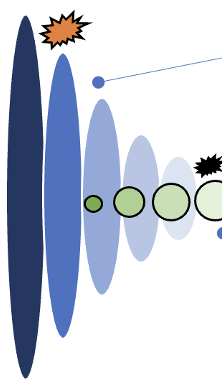 | Humanities, Medical Sciences, Social sciences | Chris Chambers | 2023-05-15 11:01:37 | View | |
07 Apr 2022
STAGE 1

Breaking Ban: Assessing the effectiveness of Belgium’s gambling law regulation of video game loot boxesLeon Y. Xiao https://osf.io/8fvt2/Has the “ban” of loot boxes eliminated them from Belgian mobile games?Recommended by Veli-Matti Karhulahti based on reviews by Andrew Moshirnia, Joseph Macey and Jason Chin based on reviews by Andrew Moshirnia, Joseph Macey and Jason Chin
Paid loot boxes, i.e. randomised monetization methods that are similar to lottery-type gambling, have become prominent features of contemporary gaming (e.g., Macey & Bujić, 2022). Because the design structures of loot boxes vary and the value of their virtual rewards is not always clear-cut, many countries now struggle how to deal with them legally and in practice (see Drummond et al., 2020). Belgium is one of the few countries that have officially interpreted loot box monetization to widely belong under gambling regulation. Mobile games that monetize with paid loot boxes in Belgium should thus apply for a gambling license, and companies should generally not offer paid loot boxes to local underage players at all.
In this Stage 1 Registered Report, Xiao (2022) has constructed a careful plan for testing whether the “ban” in Belgium has made the local mobile game market distinct in terms of paid loot boxes. The work builds on a rapidly accumulating literature and evolving methods (e.g., Xiao et al., 2021). The author will carry out a systematic qualitative investigation of the country’s top 100 (iPhone) mobile games to investigate whether paid loot box design components have indeed been removed from the products -- and if not, whether related game companies operate with a required gambling license. Additionally, Xiao (2022) will assess Belgium’s overall paid loot box prevalence in comparison to other countries and carry out a field experiment to test whether players can easily circumvent the local regulation by transporting or downloading different versions of software. The study will produce valuable evidence regarding the effectiveness of loot box regulation in general, and more specifically, the results should be of utmost interest to Belgian legal authorities. To ensure the transparency and validity of the chosen methods as well as upcoming interpretations, the registered report format allowed the research design to be reviewed in three rounds before data collection. Three experts, representing the fields of law and gaming, reviewed the Stage 1 manuscript twice and agreed upon the acceptance of all details. Finally, the recommender carried out a third iteration with further requested revisions, which was followed by in-principle acceptance. URL to the preregistered Stage 1 protocol: https://osf.io/5mxp6 Level of bias control achieved: Level 6. No part of the data or evidence that will be used to answer the research question yet exists and no part will be generated until after IPA. List of eligible PCI RR-friendly journals:
References
| Breaking Ban: Assessing the effectiveness of Belgium’s gambling law regulation of video game loot boxes | Leon Y. Xiao | <p>Loot boxes in video games are gambling-like mechanics that players buy to obtain randomised rewards of varying value. Loot boxes are conceptually and psychologically similar to gambling, and loot box expenditure is positively correlated with se... | Humanities, Social sciences | Veli-Matti Karhulahti | 2022-02-07 22:54:50 | View | ||
09 Jul 2023
STAGE 1

How Intelligence Interviewees Mentally Identify Relevant InformationDavid A. Neequaye & Alexandra Lorson https://psyarxiv.com/bpdn2How an interviewee knows what information is key to disclose or withholdRecommended by Zoltan Dienes based on reviews by 2 anonymous reviewers based on reviews by 2 anonymous reviewers
Research on interviewing has often focused on topics (such as aiding memory of witnesses) which presume the interviewee has already correctly identified the precise information that the interviewer is really after. But how does an informant know what sort of information is asked for, a precondition for an informant to then choose to provide the information or withhold it (depending on their own interests)?
In this study, Neequaye and Lorson will ask subjects to take the role of an informant about a criminal gang, with the further instructions to be cooperative or resistant in helping the interviewer obtain the information they want. In one study, the participants will be asked merely to identify what information the interviewer wants. In the second study, the participants will answer the interviewer's questions, disclosing whatever information they feel best suits their interest. Crucially, the level of detail of the questions will be manipulated, such that the question specifies a clear objective or not. The Stage 1 manuscript was evaluated over three rounds of in-depth review. Based on detailed responses to the reviewers’ comments and edits to the stage 1 report, the recommender judged that the manuscript met the Stage 1 criteria and therefore awarded in-principle acceptance (IPA). URL to the preregistered Stage 1 protocol: https://osf.io/82qtn Level of bias control achieved: Level 6. No part of the data or evidence that will be used to answer the research question yet exists and no part will be generated until after IPA. List of eligible PCI RR-friendly journals: References
1. Neequaye, D. A., & Lorson, A. (2022). How Intelligence Interviewees Mentally Identify Relevant Information, in principle acceptance of Version 3 by Peer Community in Registered Reports. https://osf.io/82qtn
| How Intelligence Interviewees Mentally Identify Relevant Information | David A. Neequaye & Alexandra Lorson | <p>This research explores how intelligence interviewees mentally identify the relevant information at their disposal, which they may or may not disclose. We theorize that interviewees mentally identify applicable information items by estimating th... | Humanities, Social sciences | Zoltan Dienes | 2022-02-25 22:20:40 | View |
MANAGING BOARD
Chris Chambers
Zoltan Dienes
Corina Logan
Benoit Pujol
Maanasa Raghavan
Emily S Sena
Yuki Yamada


